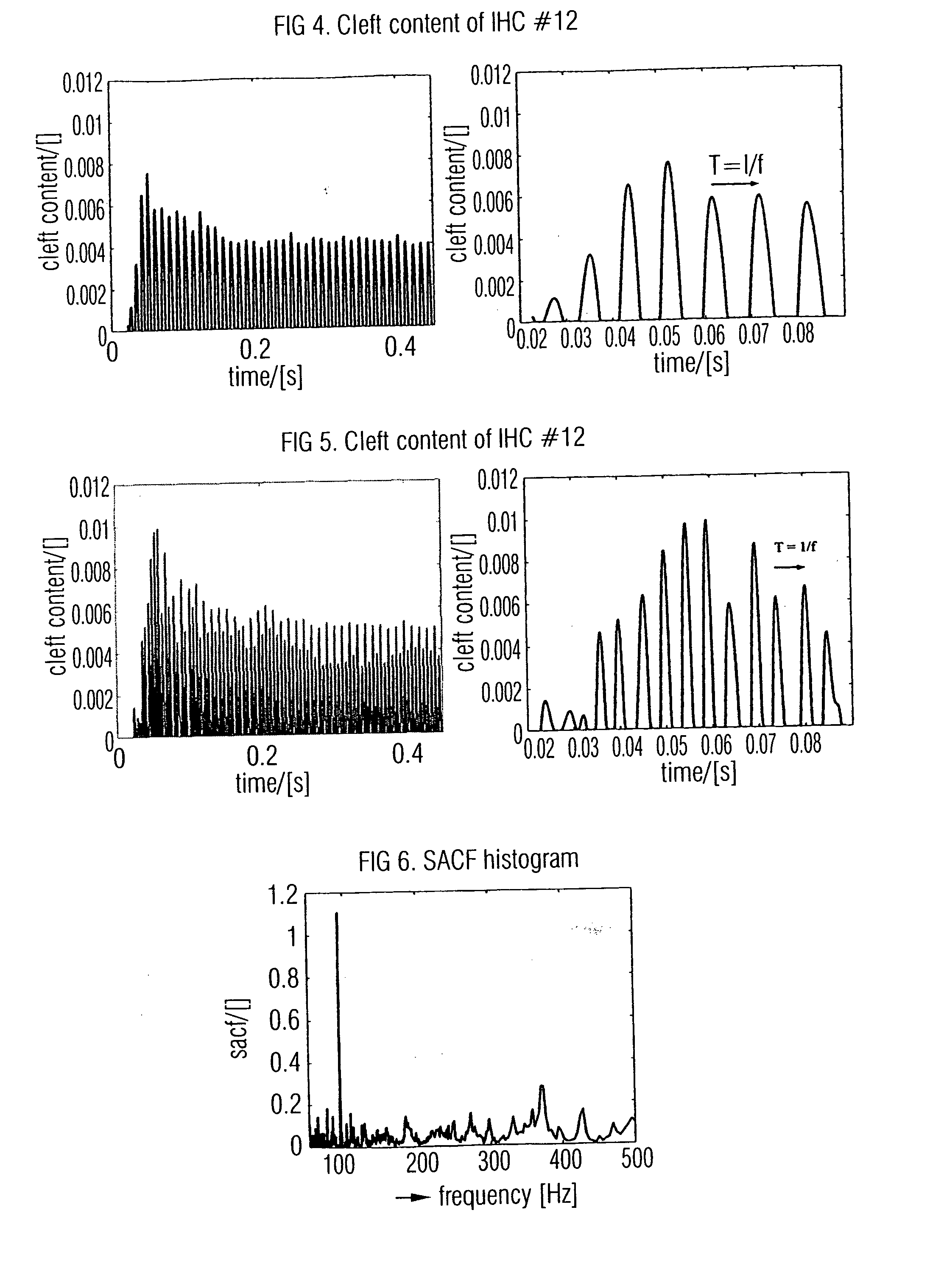Apparatus and method for analyzing a sound signal using a physiological ear model
a physiological ear model and sound signal technology, applied in the field of sound signal analysis tools, can solve the problems of prior art methods for sound signal analysis, inability to search audio data using conventional search machines, and high information loss
- Summary
- Abstract
- Description
- Claims
- Application Information
AI Technical Summary
Benefits of technology
Problems solved by technology
Method used
Image
Examples
Embodiment Construction
[0047]FIG. 21 shows a preferred embodiment of an inventive apparatus for analyzing a sound signal such as a sound signal shown in FIG. 1.
[0048] The inventive device includes an ear model 210. The ear model is operative to derive, from the sound signal at the sound signal input 208, an estimate for a time-varying concentration of a transmitter substance inside a cleft between an inner hair cell and an associated auditory nerve so that concentration estimates for inner hair cells are obtained which form the inner hair cell cleft content map, which is indicated at the ear model output 212 in FIG. 21. An example for an inner hair cell cleft content map is shown in FIG. 3. FIG. 3 indicates estimated transmitter concentrations over time (from 0 seconds to 0.28 seconds for exactly 251 inner hair cells). As has been outlined above, lower order inner hair cells indicate lower frequencies, while higher order inner hair cells indicate higher frequencies. In particular, each inner hair cell is...
PUM
 Login to View More
Login to View More Abstract
Description
Claims
Application Information
 Login to View More
Login to View More - R&D
- Intellectual Property
- Life Sciences
- Materials
- Tech Scout
- Unparalleled Data Quality
- Higher Quality Content
- 60% Fewer Hallucinations
Browse by: Latest US Patents, China's latest patents, Technical Efficacy Thesaurus, Application Domain, Technology Topic, Popular Technical Reports.
© 2025 PatSnap. All rights reserved.Legal|Privacy policy|Modern Slavery Act Transparency Statement|Sitemap|About US| Contact US: help@patsnap.com



